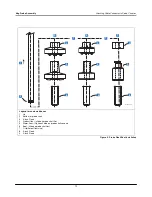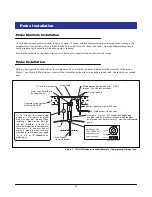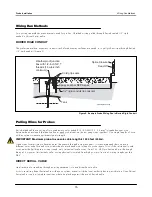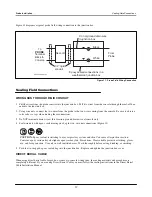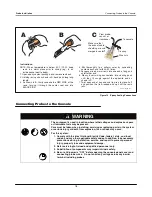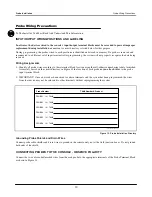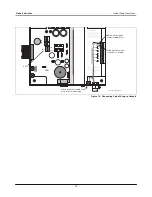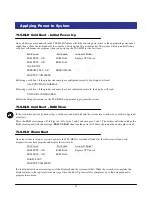
15
Probe Installation
Wiring Run Methods
Wiring Run Methods
Two wiring run methods are commonly used for probes - Shielded wiring pulled through buried, sealed 1/2” rigid
conduit; or direct burial cable.
BURIED RIGID CONDUIT
The preferred method, especially in new sites before driveway surfaces are paved, is to pull probe wiring through buried
1/2” rigid conduit [Figure 9].
Figure 9. Example Probe Wiring Run in Buried Rigid Conduit
Pulling Wires for Probes
Pull shielded cable consisting of two conductors, color-coded #14-18 AWG (2.5 - 0.8 mm
2
) stranded copper wire,
between the console and the junction box at each probe location (do not gang wires together). Use single lengths of wire
with no splices to ensure optimum signal strength.
IMPORTANT! Maximum probe-to-console cable length is 1000 feet (305m).
Since wires for multiple probes may enter the console through a single conduit, it is recommended that you use a
different color-code for each wire or individually mark each wire to identify probe inputs. Also, if the intrinsically safe
wires enter the building in a wiring trough, only intrinsically safe wires (from TLS-HLD probes) can be in the trough.
Keep all low power (intrinsically safe) wiring physically isolated from high power wires in all wiring troughs per the
NEC.
DIRECT BURIAL CABLE
An alternative to trenching through existing pavement is to use direct burial cable.
Prior to installing direct burial cable with epoxy splices, consult with the local authority having jurisdiction. Use of direct
burial cable is only allowed in locations where local codes permit the use of buried cable.
Cord grip seals
Weatherproof junction
box with 1/2-inch N.P.T.
threads (16 cubic inch
minimum)
Epoxy seal per NFPA spec
probes\pconduit.eps
1/2'' rigid conduit (to console)
Tank
.
.
.
.
.
.
.
.
.
.
.
.
.
.
.
.
.
.
.
.
.
.
.
.
.
.
.
.
.
.
.
.
.
.
.
.
.
.
.
.
.
.
.
.
.
.
.
.
.
.
.
.
.
.
.
.
.
.
.
.
.
.
.
.
.
.
.
.
.
.
.
.
.
.
.
.
.
.
.
.
.
.
.
.
.
.
.
.
.
.
.
.
.
.
.
.
.
.
.
.
.
.
.
.
.
.
.
.
.
.
.
.
.
.
.
.
.
.
.
.
.
.
.
.
.
.
.
.
.
.
.
.
.
.
.
.
.
.
.
.
.
.
.
.
.
.
.
.
.
.
.
.
.
.
.
.
.
.
.
.
.
.
.
.
.
.
.
.
.
.
.
.
.
.
.
.
.
.
.
.
.
.
Seal-Off
Splice Closure












